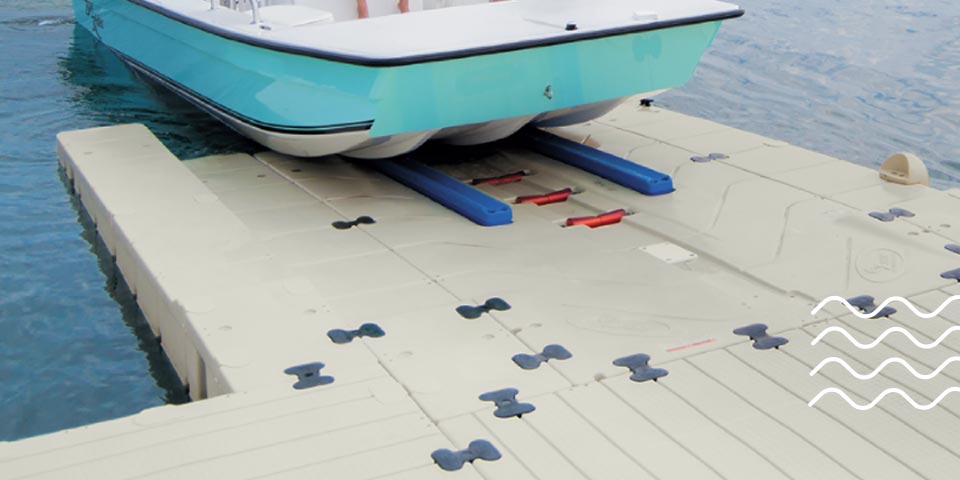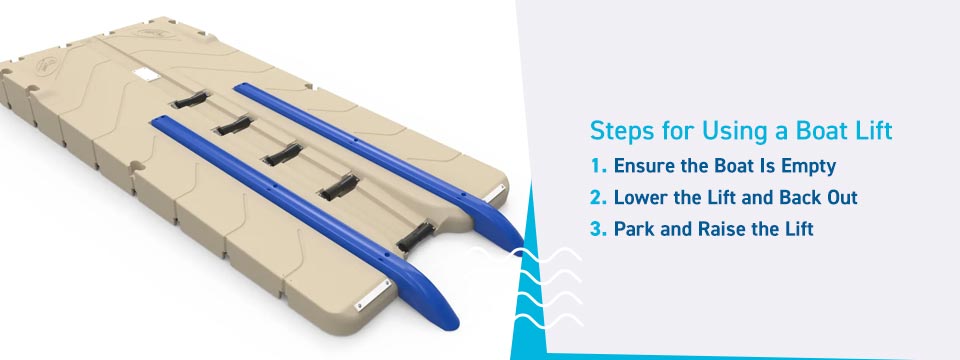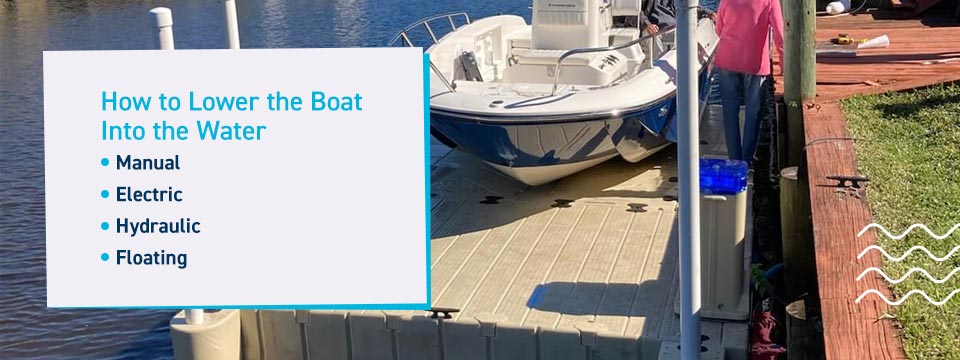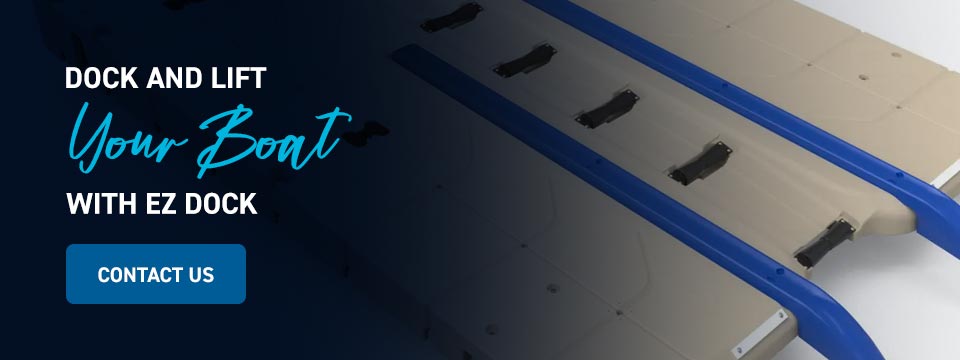Filters
How to Use a Boat Lift
Boat lifts are an effective way to store and launch your boat during the boating season. Rather than launching your boat from the trailer and hauling it away after each use, a boat lift allows you to keep the boat out of the water so it’s ready for the next use. Whether you’re using a boat lift for the first time or need a refresher, learn how to use a boat lift properly with the steps and tips below.
Steps for Using a Boat Lift
Knowing how to operate a boat lift is essential for its proper use and safety. It may seem overwhelming if you’ve never used a boat lift since it’s responsible for supporting your boat. But operating a boat lift is relatively simple. While the operation of a boat lift will vary depending on the type, consider these three basic steps.
1. Ensure the Boat Is Empty
Different boat lifts are designed to hold recommended weights safely. Since boats are heavy to begin with, much of the lift’s weight capacity, if not all of it, will already be full with only the boat sitting in the lift. When operating the boat lift, it’s best to limit the amount of extra weight on the boat to prevent straining the lift. Keep any additional gear or passengers on the dock until the boat lift is safely lowered into the water and the boat is floating freely.
Extra strain on a lift’s cables can cause unnecessary wear, potentially leading to a cable snapping. Since boat lifts are designed to lift boats and not people, there are no extra safety systems or cables on a boat lift to prevent damage or injury. Keep the boat empty when operating the lift to ensure your passengers’ safety.
2. Lower the Lift and Back Out
After you ensure the boat is empty, you can safely lower the lift until the boat floats above the cradle. Depending on the type of lift you have, you may lower it with the flip of a switch or manually turn a crank. It’s important to avoid lowering your lift too far, especially if it uses cables, as they can come unwrapped and re-wrap improperly when you raise it back up.
With your boat floating above the cradle, you and your passengers can board the boat. Once everyone is seated, you’ll put the boat in reverse and carefully back out of the lift. Much like backing a car out of a parking space, you should go slow and be aware of your surroundings to avoid hitting anything.
3. Park and Raise the Lift
When returning to the dock, slow down and carefully maneuver the boat into the lift so it’s floating above the cradle again. Position the boat in the lift so less boat hangs off the back of the lift than the front. As mentioned above, avoid operating the lift with people in the boat. Shut the boat off and have everyone exit before raising the lift. When raising your lift, be sure to raise it above crashing waves, especially if it will be sitting a while between uses.
How to Lower the Boat Into the Water
Typically, lowering a boat into the water is a two-person job — one controls the lift while the other controls the boat. However, some lifts can be controlled remotely, allowing one person to do both. How you lower your boat into the water will depend on the type of lift system you have.
Here are a few common types of boat lift systems and how to lower your boat into the water with them:
- Manual: A manual lift system utilizes cables and pulleys to lift and lower your boat. To operate these lifts, you have to physically turn a wheel or lever to crank the cables up or down.
- Electric: Electric lifts typically use cables and pulleys, too. These lifts run on electricity, allowing you to crank the boat up or down with a motor. Electric lifts require electrical access at the dock.
- Hydraulic: Hydraulic boat lifts operate without cables or pulleys, making them quiet and smooth. Hydraulic lift systems lower your boat with a switch that controls the hydraulics. These lifts can often be controlled with remotes.
- Floating: Floating boat lifts are typically paired with floating docks. These lifts use air pumps and electricity or solar power to displace air in the lift and lower the boat into the water.
Tips for the Boat Lift Parking Process
Parking your boat back on the lift is often considered more challenging than exiting the lift. The boat lift parking process takes some practice and careful maneuvering, but once you get the hang of it, the process will seem less intimidating. Here are a few tips to keep in mind when returning to the dock:
- Monitor your boat’s speed: Your boat’s speed as you approach the dock and lift is crucial to safe parking. High speeds could result in overshooting the boat lift cradle, and if you’re going too slow, you may drift out of line. It’s best to use short bursts of the motor to maintain a safe speed as you approach the lift.
- Use parking guides: Use the lift’s parking guides to help you navigate the boat into the cradle and find the right position. You can make slight adjustments to straighten the boat out as you float above the cradle with the motor off.
- Pay attention to wind and waves: Be sure to also pay attention to external factors like currents, waves and wind that will push your boat in different directions as you try to park it. If you slow down too much before reaching the lift, your boat could be blown or pushed off course and you could miss the lift.















